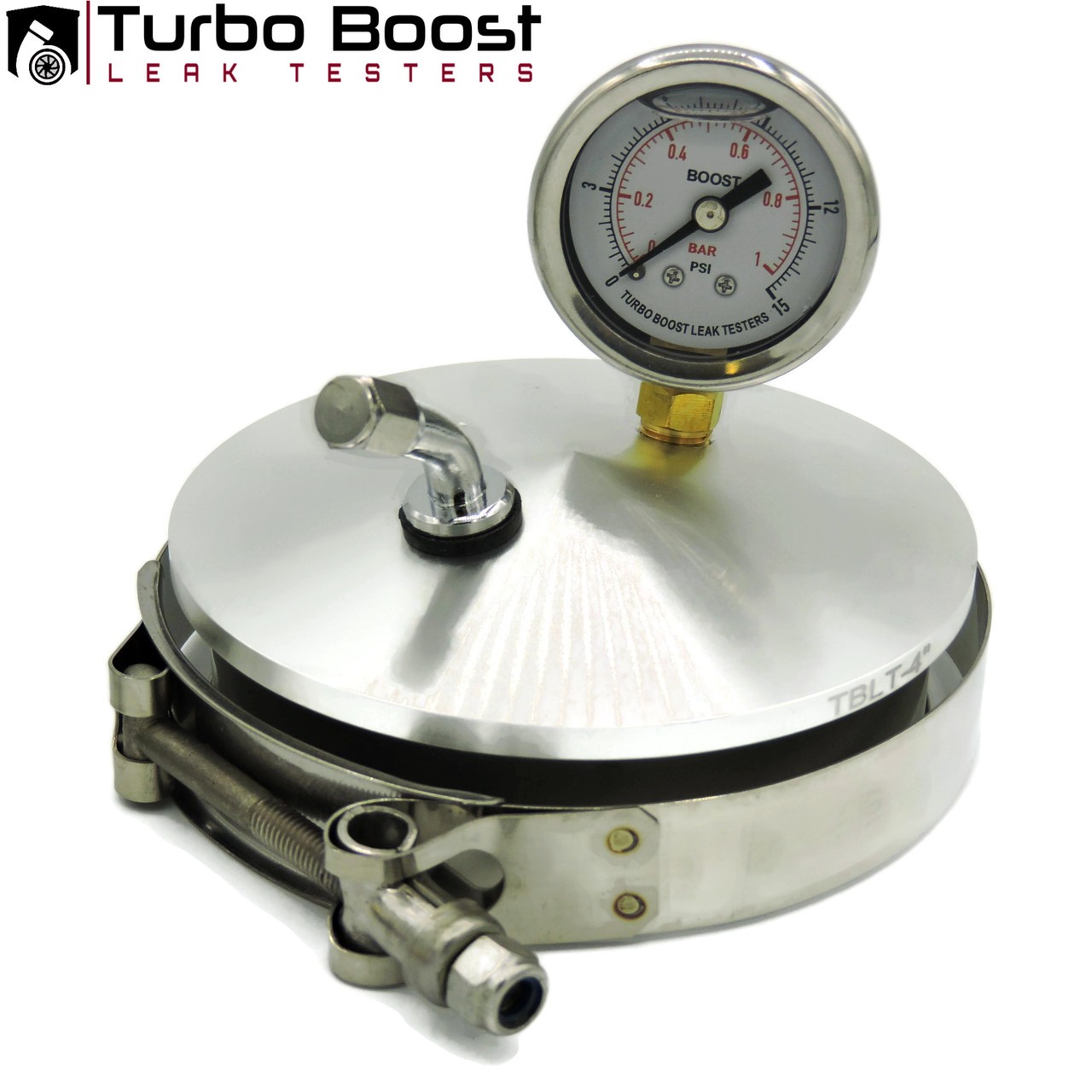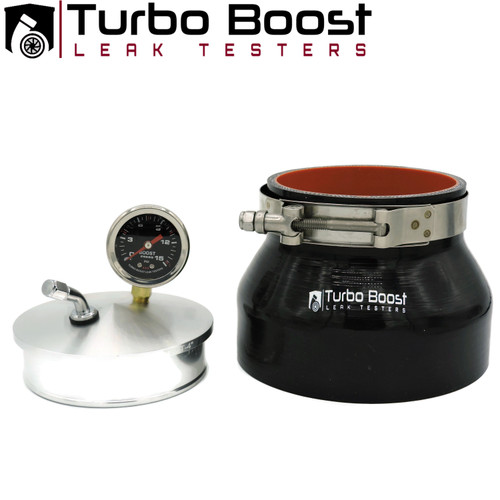Product Description
This end cap is 4" and can be used with any size adapter to either size up or size down for your application. It can also be used as is and slipped into a flexible hose with an ID of 4".
This is an important tool every turbo car owner needs in their arsenal of tools. It will keep the turbo healthy by eliminating leaks in the boost path and not allowing it to over speed compensating for a boost leak. A must if you are tuned or any time you are replacing any components in the intake tract such as charge hoses, intercooler, manifold, vac lines, injectors…etc. Also a must if you are going to the track and want the peace of mind that the turbo wont over-work or risk blowing any hoses off that are loose
Includes/Design Features:
- 4" O.D. (outer diameter) End Cap - Billet 6061 Anodized Aluminum, 1/8" NPT threaded gauge port & 1/4" NPT fitting port fits both style fittings
- New for 2021: Machined grip rings on the clamped surface and 1/4" NPT threaded port for a compressor air fitting
- Boost Gauge - Custom Stainless Steel 30 PSI / 1Bar – Liquid filled 15 PSI / 1 Bar
- Tire Valve Fitting and 1/4" NPT Compressor fitting (Mtype
- 4" Stainless Steel T-Bolt Clamp
- Lifetime warranty
Importance of a Gauge?
Absolutely necessary for a proper test! Not having gauge readout on a boost leak test is similar to filling air in your car's tire without a gauge. You just don't know how much air is in the system!
It’s wise to know how much pressure is actually going into the charge system to prevent damage to the engine and to yourself. For example, if the compressor is unregulated (ex. shop air at 90 PSI) there is a risk that you can over-pressurized and something will give.
Benefits of Gauge:
- Allows you to apply a safe amount of pressure to prevent injury or damage
- read how fast the system holds and bleeds air
- Gives a good comparison of compressor outlet air Vs. boost test air while pressurizing. (lower the difference the better)
How do I know if I have a Boost Leak??
Typically the boost target will be lower than what is expected by the tune
Boost onset could be erratic
Slower than normal spool-up
P-codes, Check engine lights – system too rich
What happens to the turbo charger if there is a boost leak??
Any leak will cause the turbo’s wheels to over-spin and result in the bearings to wear out eventually causing shaft play! This happens faster with larger leaks. This condition then allows for the turbo’s wheel tips to make physical contact with the turbo housing. It’s over for your turbo at that point!
Simple Steps to Use the Boost Leak Tester:
- Remove the intake hose/pipe off your turbochargers inlet
- Install the boost leak tester onto the turbochargers inlet and secure with the T-bolt clamps
- Pressurize the boost leak tester with an air compressor and a tire inflation tool. The air compressor should be a minimum of 2 gallon volume. The larger the compressor, the more capacity you have to fill the engine’s charge pipes. A bike pump or electric pump will not supply enough air fast enough to fill the system
- *Caution!- When filling the system, start with a low pressure around 5 PSI. Recommended to regulate the compressor to a lower pressure and only increase if filling is too slow. · The boost gauge reading indicates how much compressed air is in the charge pipes. · The boost gauge allows you to read the bleed rate of charge pipes when you remove the pressure. It is normal to see pressure loss average of 1psi every second. Faster bleed rate at higher pressures and slower bleed rate at lower pressures
- Listen for leaks. Use soapy spray if necessary to identify smaller leaks.
- Fix any leaks points and then retest. Increase by 5 psi up to the normal operating boost pressure.
- Go out and Boost! Enjoy the restored power from your engine!

















